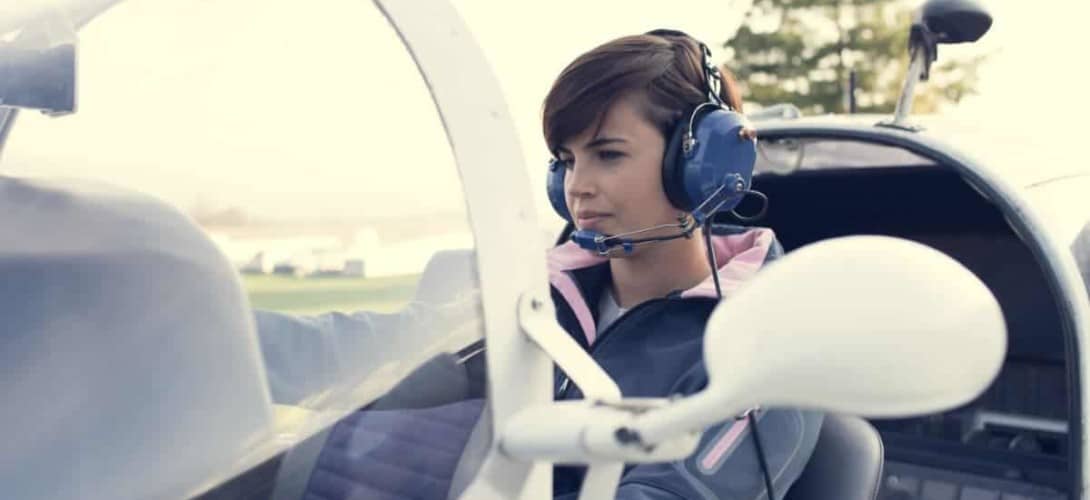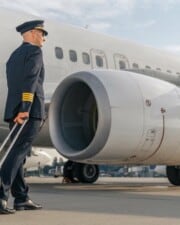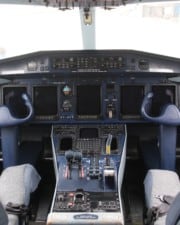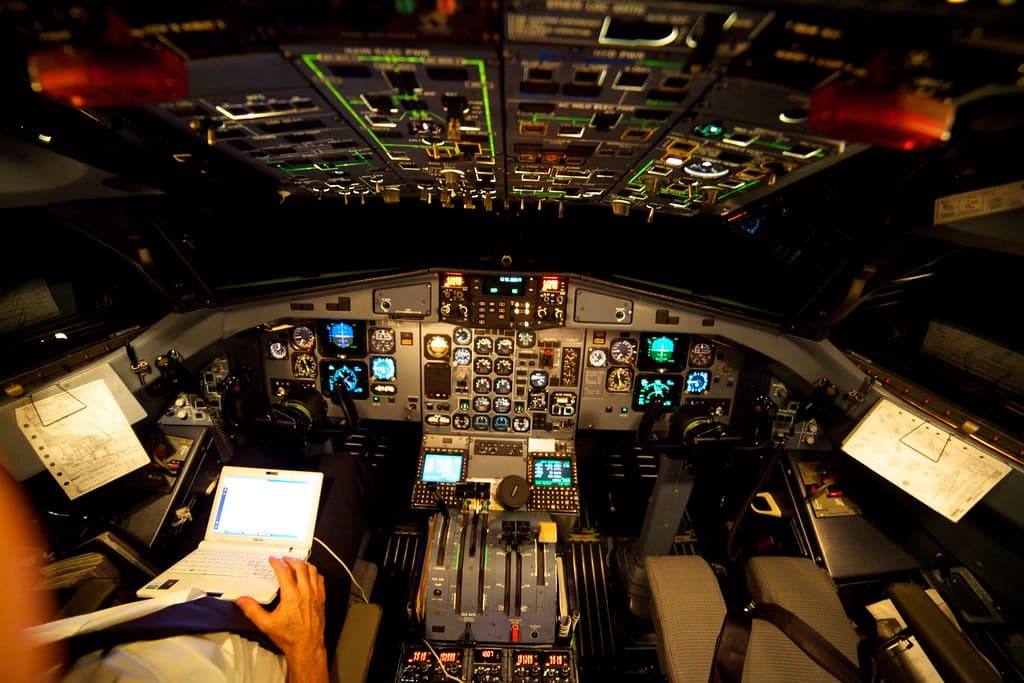Shopping for the right type of pilot school can take a little research. There are tons of new terms to wrap your head around, and the dollars and cents of flight training might also look like a riddle. One of the biggest questions potential students need to tackle is the difference between Part 61 vs 141 flight training.
Table of Contents
Part 61 is the Federal Aviation Regulation (FAR) about pilot certificates. It states who is eligible and what they need to do to get one. FAR Part 141 certifies official flight schools. Like an airline, the FAA inspects a Part 141 flight school and authorizes its curriculum, staff, aircraft, and facilities to conduct pilot training.
What is Part 61 in Aviation?
Part 61 is pilot shorthand for Part 61 of Title 14 of the Code of Federal Regulations. Title 14, Chapter 1 is the FARs, or Federal Aviation Regulations. This chapter contains all of the various rules about flying that the aviation community in the US abides by that are enforced by the FAA (Federal Aviation Administration).
Specifically, Part 61 deals with pilot certificates–how you get a pilot’s license and who can get one. The part is divided into sections for each type of certificate and rating and includes specifics on eligibility, knowledge, and flight training hours necessary to receive one.
Part 61 also states how to keep a pilot’s certificate valid. It talks about how you keep current, what happens if you are convicted of a drug or alcohol violation (DUI/DWI), and what type of medical certificate you might need.
As a result, Part 61 is the key regulation you will refer to during your flight training. It tells you how to go about the flight training–what you need to learn and what you’ll be tested on.
What is Part 61 Flight Training?
Part 61 flight training simply means that your flight instructor is referring to Part 61. It is often compared to Part 141 flight training, which is completed at a formal pilot school.
A Part 61 flight school doesn’t exist. Part 61 only tells us what an individual pilot must do to get a pilot’s license. You must get your training from a certified flight instructor. If you know a flight instructor and rent a plane, you can get your training done without contacting a formal “flight school.”
Flight training under Part 61 can look different depending on where you get it. For example, flying with an independent flight instructor might be very relaxed. But many well-run flight schools operate under Part 61.
What is the Difference Between Part 61 and Part 91?
Both Parts 61 and 91 are sections of the Federal Aviation Regulations, but they are about completely different things.
Part 61 is all about pilot certificates. It covers who is eligible for a pilot’s license and what they need to do to get one.
Part 91, on the other hand, is all about operating an aircraft. It talks about airspace requirements, what equipment needs to be on the aircraft, and the kinds of weather a VFR pilot can fly in. You can think of Part 91 as the rules of the road.
In other words, Part 61 is about how you become a pilot. Part 91 is everything you do as a pilot and how you must operate your plane.
What is Part 141 in Aviation?
Part 141 is the FAR that talks about pilot schools. It provides that if a flight school meets the regulation’s specific requirements, it can get a flight school certificate–much like a pilot gets a pilot certificate. That’s right, the FAA issues certificates to businesses, too. Not only can flight schools get certificates (Part 141), repair stations can get certified under Part 145, and airlines can get certified under Part 121.
As a student, attending a Part 141 flight school means you know the school has a formal, FAA-approved curriculum. You will receive a copy of your flight training syllabus; from that, you will know what you will do on each lesson. Everything you do will be extremely structured, so you’ll know in advance what maneuvers to study and what tests are coming up.
The regulation offers guidance on how flight schools should be run. It also provides minimum standards to ensure safe and effective training. To keep their 141 Certificate, a flight school must maintain those standards and be inspected regularly by the FAA.
Part 141 Requirements
For each approved course, Part 141 lays out the minimum number of hours it must contain. Generally, these courses require fewer flying hours than Part 61, but overall they are very similar.
One particular benefit of Part 141 training is that you can include more simulator or FTD (Flight Training Device) time. For example, Part 141 allows you to credit as much as 40 percent of the flight time toward your instrument rating from an FTD if the school has an approved unit.
What is the Difference Between FAA Part 61 and 141?
From the FAA’s point of view, Parts 61 and 141 are very different. But from the perspective of a student pilot, it can be very hard to tell them apart.
You’ll hear a lot about the difference between a Part 61 and a Part 141 school. The technical differences are mostly structural and may not matter much to you. What you want to know is, which one is better, and which might be cheaper.
Part 61 is a collection of rules that describe everything about pilot certificates. Finally, part 141 is written for a business that wants to become a licensed flight school.
There are certainly some benefits of flying in an organized 141 school where the staff is all well-trained and on the same page. But the reality is that most pilot training looks more alike than different.
If you went to a Part 61 school, the instructor doesn’t have to follow a curriculum or an organized training program. But there are very few instructors out there who wouldn’t, meaning most training from reputable schools looks very similar.
Is Part 141 or Part 61 Cheaper?
Reading the sales literature from most Part 141 flight schools would lead you to believe that any other option was less than suitable. The reality is more nuanced, however.
Because Part 141 schools are so well-structured, the FAA allows pilots to graduate with fewer hours than a pilot can under Part 61. The best example is the private pilot license, which requires 40 hours under Part 61 but only 35 hours under 141. If you look at the commercial license, the savings in hours are even greater.
But the truth is that students rarely finish a rating in the minimum amount of hours, especially private pilot applicants. The national average for finishing a private license in the US is between 60 and 75 hours to earn your wings, regardless of whether the training is done under Part 141 or not.
The cost of a pilot’s license comes down to how much you pay per hour and how many hours you take. Many schools give a final number based on the minimum amount of hours, but that price amounts to the minimum price you might pay. So it could cost double or triple that amount in the end.
Regardless of where you get your flight training, there are only a few ways to save money. One is to get the best rate you can on the airplane. This might mean flying something older and less shiny than you’d like.
The second way is to ensure you are flying with the most experienced and talented flight instructor you can find. A good flight instructor makes all the difference. Some people are natural teachers, and others are not. So find an instructor you can connect with and learn from–one who really knows their stuff. It will save you thousands of dollars.
The last way to save money is to spend as much time as you can studying on your own. If you can master the groundwork with fewer hours of classroom instruction, you can save another few thousand dollars. Home-study courses can pay for themselves many times over.
Part 141 vs Part 61 Commercial Requirements
If you start comparing and adding up individual course requirements, there are considerable savings (in flight hours needed) to get all of your ratings if you train under Part 141. This is one of the main reasons that an accelerated flight training program for professional pilots will be Part 141.
For example, the minimum for a commercial certificate under 141 is 190 hours (35 hours for the private, 35 for the instrument, and 120 for the commercial). The minimum total time to be eligible for the same rating under Part 61 is 250 hours total time.
Do Airlines Prefer Part 61 or 141?
Logically, you would think that airlines would prefer to hire from Part 141 schools. Indeed, many Part 141 have agreements with airlines to help their graduates land jobs after they have completed flight training.
These agreements are a great starting point if you’re looking for an airline career. They seldom guarantee a job, but they often guarantee a job interview.
When it comes time for that job interview, airlines seldom care how you completed your flight training. What they care about is that you completed the training, passed all the tests, and have the number of hours of flight time that they are looking for.
For civilian pilots making their way to the airlines, the number one path is to work as a flight instructor for a year or two. This way, you can build hours while getting paid. You can then apply to the airlines when you are eligible for an ATP certificate. After a year of teaching the material to new students, flight instructors are typically some of the most knowledgeable pilots around.
Airlines love hiring flight instructors. But if they could choose, they would pick flight instructors from 141 schools. This is because the required structure of Part 141 is very much like the structure of a Part 121 airline. You’ll answer to the Chief or Assistant Chief Pilot, and you’ll be required to follow regulations in Parts 91, 61, and 141.
You can find the full text of each rule–Part 61 and Part 141–on eCFR.gov (reference links below). If you aren’t sure which regulation your flight school operates under, just ask them.
References ▾
Related Posts












